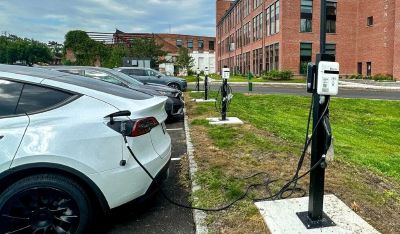


Apartment EV Charging: Meeting the Immediate Need for Renters
Apartment EV Charging: Meeting the Immediate Need for Renters
Topper Company, a professional EV charger manufacturer in China, provides reliable electric vehicle charging stations and comprehensive total solutions.
As the world embraces sustainable transportation, electric vehicles (EVs) are rapidly becoming mainstream. While EVs offer lower emissions, reduced fuel costs, and quieter rides, the charging infrastructure needed to support them is still uneven—especially for renters. Unlike homeowners who can usually install EV chargers freely, renters face unique hurdles. To ensure a successful EV transition, charging access must be universal—including for the 44 million U.S. households living in rental properties.
Apartment EV charging is no longer a future luxury but an urgent necessity. With EVs currently making up 8.6% of vehicle sales and expected to reach 13–29% by 2050, multifamily communities must act now to integrate this critical amenity.
There are three primary levels of EV charging:
Level 1 Charging: Uses a standard 120V household outlet, providing roughly 3–5 miles of range per hour. While accessible, it’s very slow—often taking over 50 hours for a full charge—making it impractical for daily use, especially for longer commutes.
Level 2 Charging: Runs on 240V circuits and is the most common residential option. It delivers 15–40 miles of range per hour, fully charging most EVs in 4–10 hours. For apartment owners, Level 2 chargers balance practicality, speed, and cost.
Level 3 Charging (DC Fast Charging): Operating at 400–1,000V, these chargers provide an 80% charge in under an hour. They’re ideal for highways and public hubs but less suited to apartments due to high costs and infrastructure demands—though they may fit in large urban complexes needing quick turnaround charging.
Eases Range Anxiety
A key barrier to EV adoption is the fear of running out of charge without easy access to stations. Reliable apartment charging lets renters start each day with a full battery, making EVs as dependable as gas cars.
Adds Convenience
Home charging simplifies life—no waiting for public stations or rearranging schedules. Charging overnight becomes part of the daily routine, turning EV ownership into a seamless experience.
Removes Barriers for Renters
Renters depend on landlords to provide charging options, which until recently were not priorities. Built-in charging amenities break down this barrier, encouraging more renters to go electric and making properties more attractive to eco-conscious tenants.
Can Be More Affordable
Public chargers often charge varying fees. Apartment charging offers predictable, potentially lower costs. Property managers can include fees in leases or offer discounts, increasing tenant satisfaction and building a tenant-friendly reputation.
Infrastructure Constraints: Older buildings may lack sufficient electrical capacity. Professional assessments and load management systems can balance power needs without costly upgrades. Smart chargers dynamically allocate electricity based on demand.
Limited Parking: Allocating chargers in assigned or shared spots can be tricky. Starting small with reserved spots, using waitlists or reservation apps, and monetizing usage can ensure fair, efficient access.
Outdoor Conditions: Weatherproof chargers and robust installation methods (bollards, pedestals) handle rain, snow, and heat. Cellular or Wi-Fi-enabled smart chargers ensure reliable connectivity outdoors.
Cost Concerns: Installation costs can be offset by government grants, tax credits, utility rebates, and tenant fees, making investments financially feasible.
Attract & Retain Tenants: Eco-friendly amenities appeal to growing numbers of EV-driving renters who value sustainability and convenience.
Increase Property Value: Green infrastructure investments boost marketability and long-term value, enhancing tenant satisfaction.
Generate Revenue: Charging fees per kWh or month provide new income streams, offsetting installation and maintenance costs.
For EV adoption to be truly inclusive, renters must have access to charging infrastructure. Multifamily communities—from urban towers to suburban complexes—must lead the way in deploying EV chargers. With modern solutions, financial incentives, and smart planning, even older properties can integrate EV charging affordably and efficiently.
Apartment EV charging has evolved from an optional amenity to a critical necessity. It relieves range anxiety, simplifies daily routines, encourages EV adoption, and enhances property appeal. As electric vehicles become the new norm and cities push for cleaner transportation, apartment communities must act now—embracing EV infrastructure to stay competitive and drive a sustainable future.Know more about Google SEO Directory
